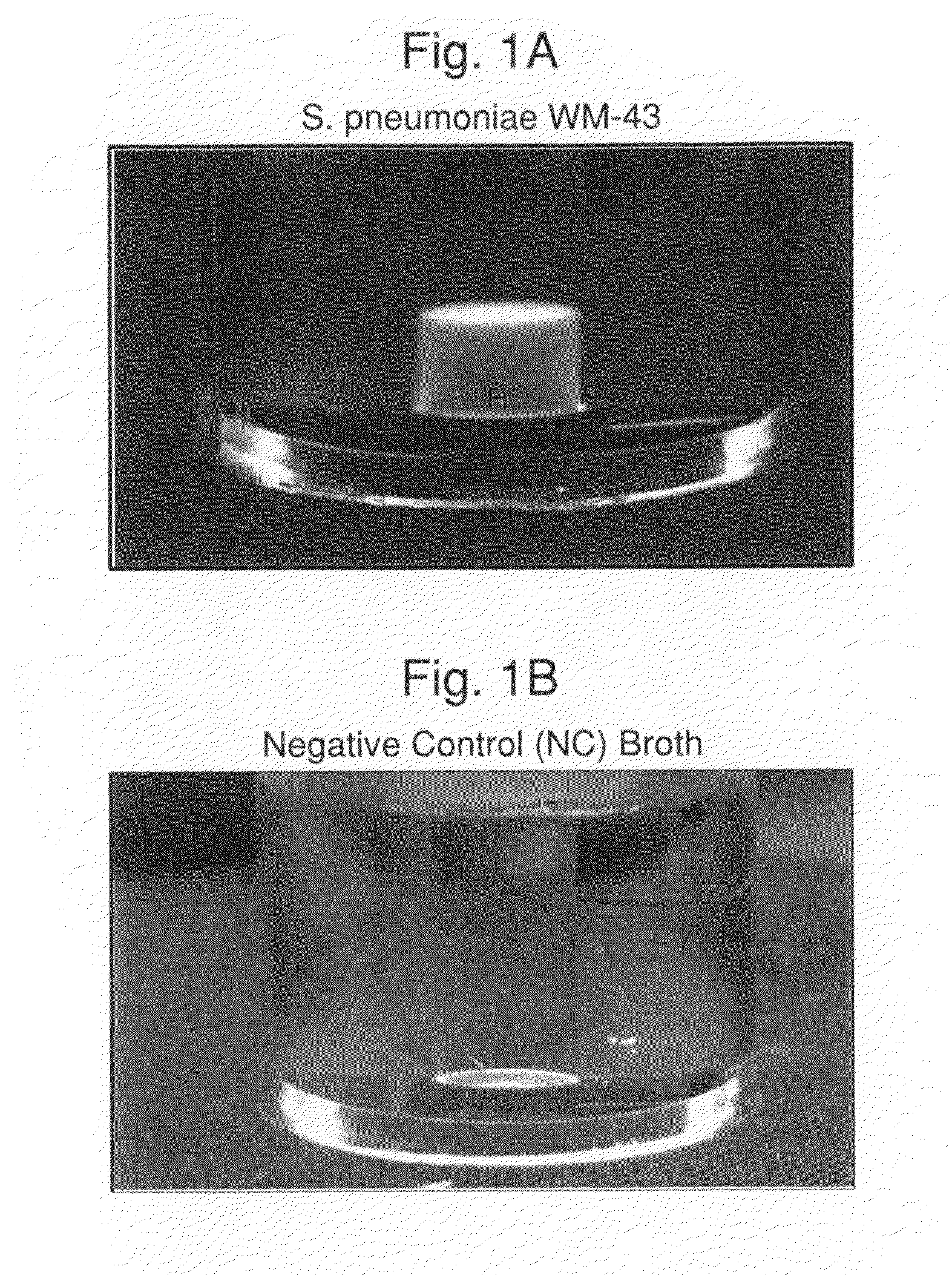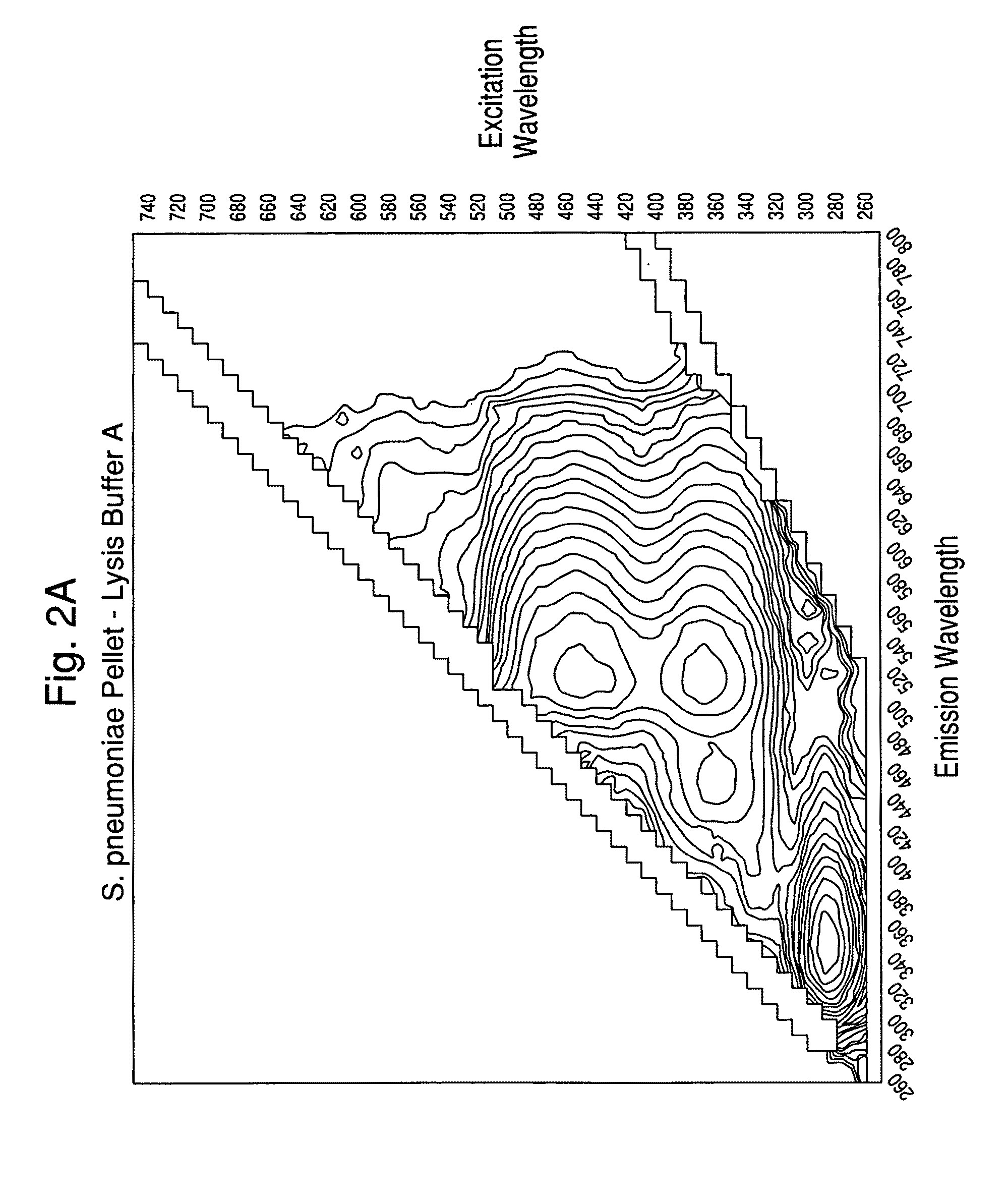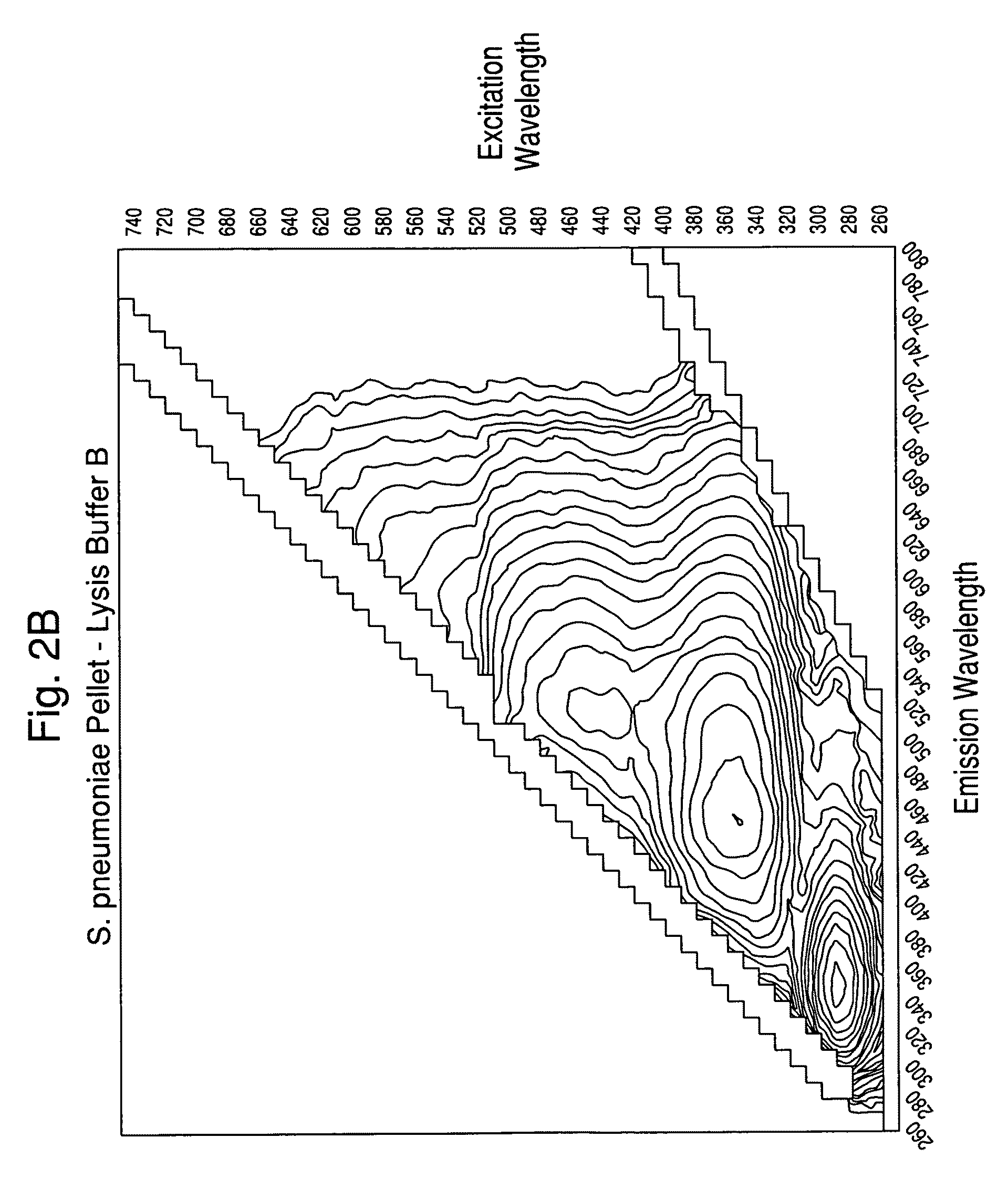Methods for the isolation and identification of microorganisms
- Summary
- Abstract
- Description
- Claims
- Application Information
AI Technical Summary
Benefits of technology
Problems solved by technology
Method used
Image
Examples
example 1
Rapid Microbial Isolation and Identification Method
A. Lysis-Centrifugation Separation Procedure
[0099]A suspension of colloidal silica (0.2-0.5 mL; 1.040-1.050 gm / mL density) was added to several conical microcentrifuge tubes. Lysed positive BacT / ALERT® SA blood culture broth samples (0.5-1.0 mL) were overlaid onto the colloidal silica suspension. Alternatively, the colloidal silica solution can be added underneath the lysed blood culture broth using a needle or cannula.
[0100]Positive broth from cultures containing the following microorganisms were tested:[0101]E. coli, ATCC 25922[0102]E. faecalis, ATCC 29212[0103]S. aureus, ATCC 12600[0104]P. aeruginosa, ATCC 10145
[0105]The tubes were capped, and then spun in a microcentrifuge for 2 min at about 10,000g at room temperature (20-25° C.). The supernatants were aspirated, then the purified microbial pellets were resuspended in 0.45% w / v NaCl to an optical density @ 660 nm of 0.40.
[0106]One portion of each suspension was transferred to a...
example 2
Evaluation of the Rapid Microbial Purification and Identification Method
[0109]To assess the potential of the rapid identification concept described in Example 1, twenty-four isolates (6 strains of 4 species comprising C. albicans, E. coli, S. aureus and S. epidermidis) recovered from positive blood cultures were tested in the method.
[0110]SPS-anticoagulated blood was collected from three donors and pooled. Ten mL of fresh human blood was added to BacT / ALERT® (BTA) SA blood culture bottles (bioMérieux Inc., Missouri). Suspensions of each of the isolates were prepared in tryptic soy broth (TSB). Each bottle was inoculated with 0.4 ml of a 103 / mL suspension and the bottles were incubated at 36° C. in a BTA cabinet. Four BacT / ALERT® SA bottles containing 10 mL blood but no organisms were included as negative controls.
[0111]Positive bottles were removed from the BTA cabinet within 3 hours of flagging positive. A negative control bottle was removed with each set of positive bottles (by sp...
example 3
Assessment of Lysis Buffers
[0113]Experiments were carried out to assess the separation efficiency and microbial intrinsic fluorescence (MIF) profiles of freshly positive S. pneumoniae WM-43 blood culture broth treated with harsh and mild lysis buffers. The following lysis buffer formulations were tested: (A) 2.0% TX100-R in 0.5M CAPS, pH 11.7 (harsh=LB-A); (B) 0.75% TX100-R in 0.5M CAPS, pH 11.7 (mild=LB-B); and (C) 0.45% TX100-R in 0.3M CAPS, pH 11.7 (mild=LB-C). 1.0 mL of lysis buffers A and B and 2.0 mL of lysis buffer C were placed in screw-capped tubes and the tubes were placed in a rack in a 37° C. water bath. Samples of broth (4.0 mL) were removed from a S. pneumoniae WM43-positive BacT / ALERT® SA culture bottle using a 5 mL syringe and 18G needle within 5 minutes of flagging positive in the BTA system. The broth was quickly dispensed to each lysis buffer-containing tube and the tubes were capped and vortexed for approximately 5 seconds. A test broth from overfilled (15 mL blo...
PUM
 Login to View More
Login to View More Abstract
Description
Claims
Application Information
 Login to View More
Login to View More - R&D
- Intellectual Property
- Life Sciences
- Materials
- Tech Scout
- Unparalleled Data Quality
- Higher Quality Content
- 60% Fewer Hallucinations
Browse by: Latest US Patents, China's latest patents, Technical Efficacy Thesaurus, Application Domain, Technology Topic, Popular Technical Reports.
© 2025 PatSnap. All rights reserved.Legal|Privacy policy|Modern Slavery Act Transparency Statement|Sitemap|About US| Contact US: help@patsnap.com



